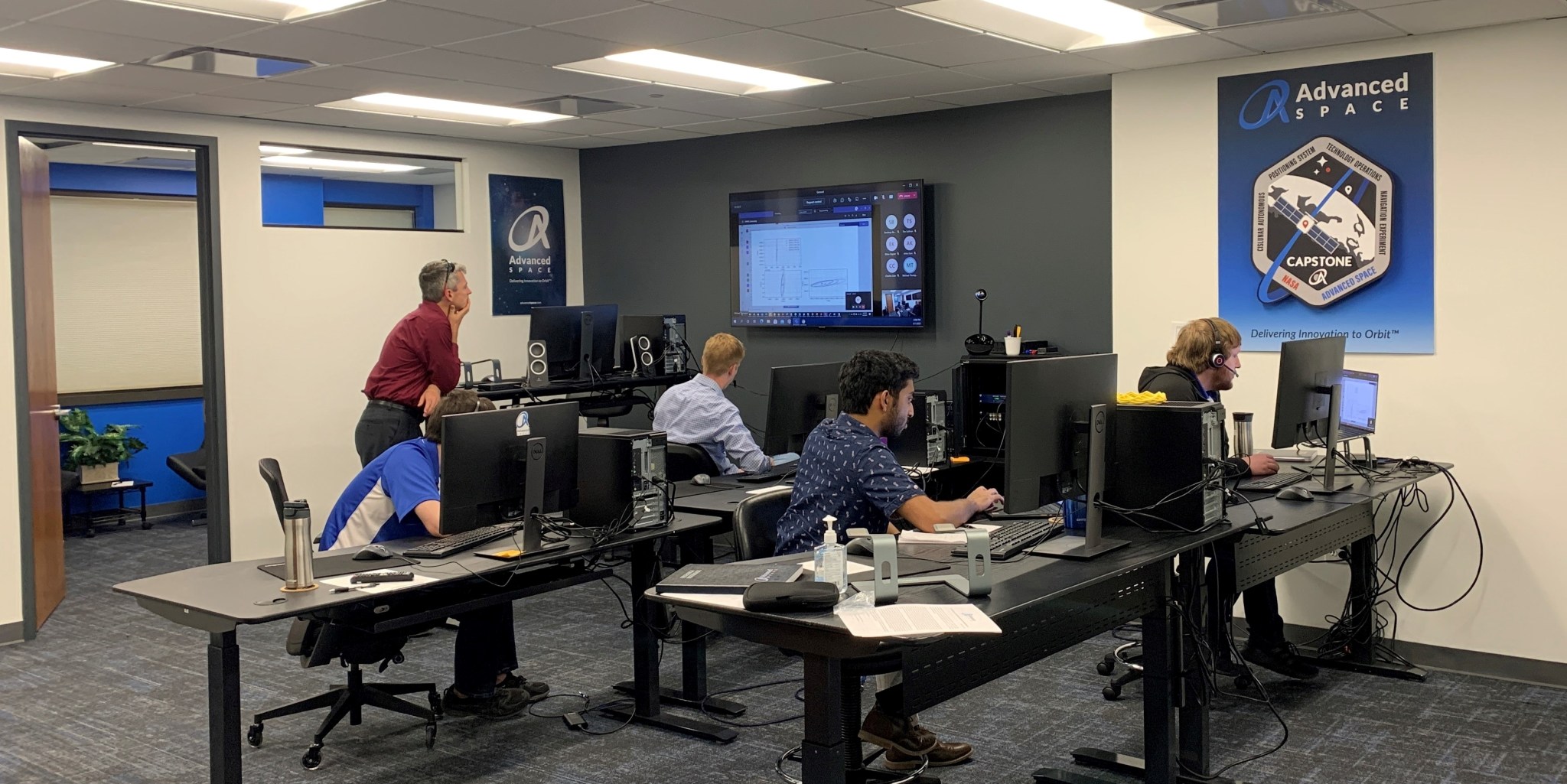
Practice makes perfect. As a Moon-bound CubeSat prepares for launch, the Cislunar Autonomous Positioning System Technology Operations and Navigation Experiment (CAPSTONE) team at Advanced Space’s operations center in Westminster, Colorado, conducted a series of mission simulations. The simulations virtually put the CubeSat through its orbital dynamics paces.
CAPSTONE, a technology demonstration mission, will test a unique lunar orbit that is intended for Gateway, the Moon-orbiting outpost for NASA’s Artemis program. CAPSTONE will demonstrate the ability of its spacecraft – a microwave-oven sized CubeSat – to enter into and maintain this special lunar orbit for approximately six months. The dynamics of this orbit, formally called a lunar near rectilinear halo orbit, or NRHO, have not been tested in spaceflight before. The NRHO takes advantage of a precise balance point in the gravity fields of Earth and the Moon. Spacecraft in this orbit will have a continuous, unobstructed view of Earth that will allow constant communications with mission controllers on Earth.
For the test, the team processed simulated CAPSTONE spacecraft tracking data provided by NASA’s Deep Space Network, to create an accurate prediction of the spacecraft’s location and future trajectory. The mission simulation tests included the team performing the precise, time-critical orbit insertion maneuver into the NRHO. This critical maneuver reduces the spacecraft’s energy so it is captured by lunar gravity. Following the NRHO insertion maneuver, the team executed insertion correction maneuvers, which clean up errors and allows the team to transition to the next expected operations at the Moon. The test also allowed the team to practice responses to potential anomalies during simulated flight to ensure the spacecraft stays on course.
CAPSTONE is commercially owned and operated by Advanced Space in Westminster, Colorado. It represents an innovative collaboration between NASA and industry to provide rapid results and feedback to inform future exploration and science missions.
NASA’s Small Spacecraft Technology program within the agency’s Space Technology Mission Directorate (STMD) funds the demonstration mission. The program is based at NASA’s Ames Research Center in California’s Silicon Valley. The development of CAPSTONE’s navigation technology is supported by NASA’s Small Business Innovation Research and Small Business Technology Transfer (SBIR/STTR) program, also within STMD. Advanced Exploration Systems within NASA’s Human Exploration and Operations Mission Directorate funds the launch and supports mission operations. The Launch Services Program at NASA’s Kennedy Space Center in Florida manages the launch service.
For news media:
Members of the news media interested in covering this topic should reach out to the NASA Ames newsroom.

























